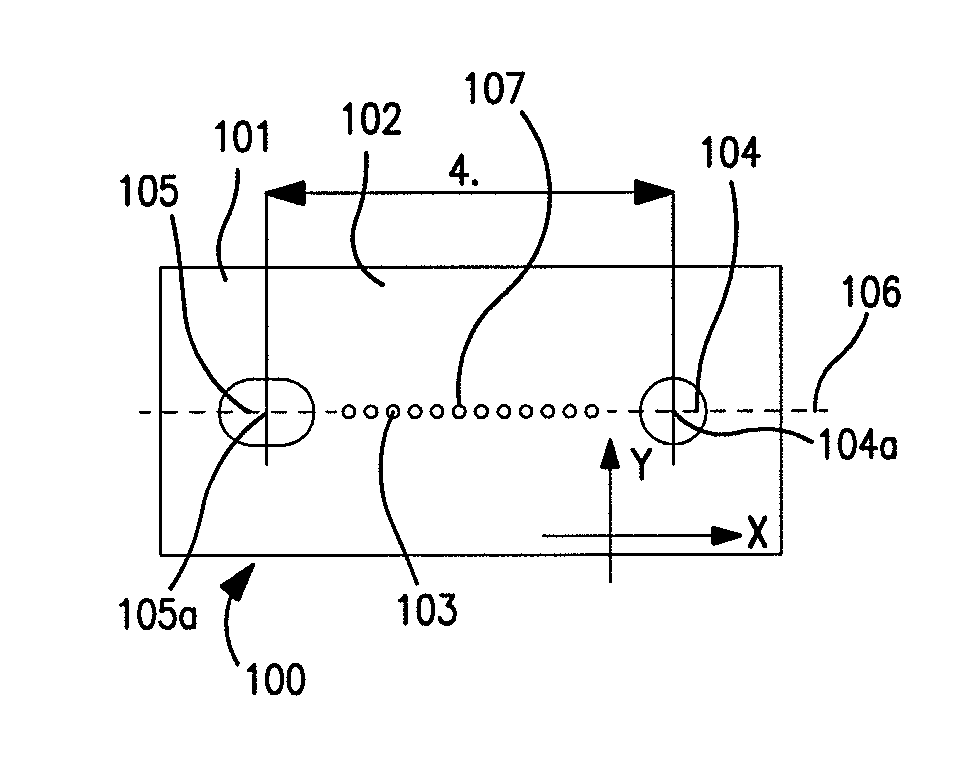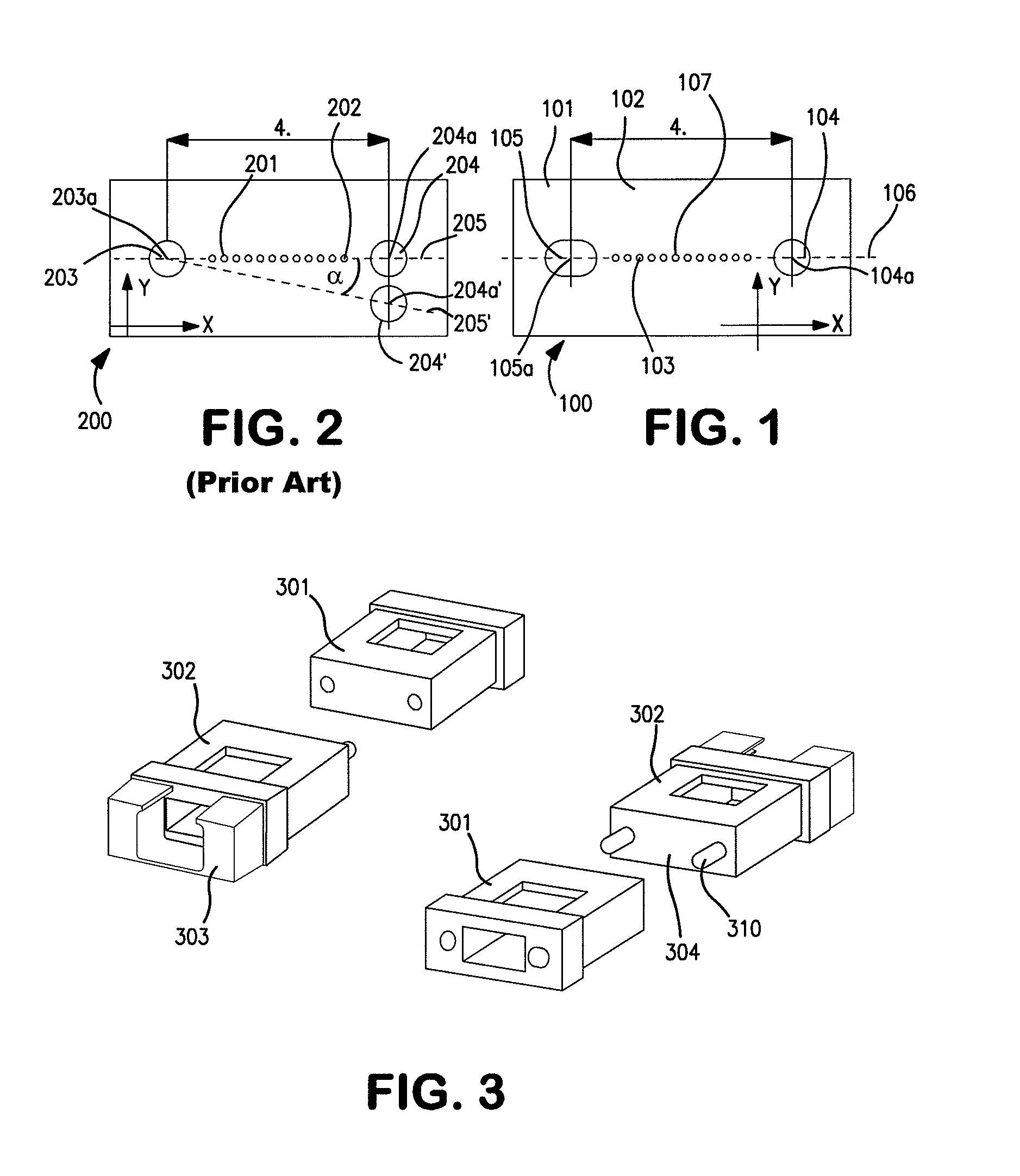Ferrule with alignment pin channels
a technology of alignment pins and ferrules, applied in the field offerrules, can solve the problems of significant losses, interference between the mating ferrules and the alignment pins, affecting the alignment of the fiber core, etc., and achieves the effects of improving optical performance, reducing stress, and close toleran
- Summary
- Abstract
- Description
- Claims
- Application Information
AI Technical Summary
Benefits of technology
Problems solved by technology
Method used
Image
Examples
Embodiment Construction
[0021]Referring to FIG. 1, one embodiment of the ferrule 100 of the present invention is shown. The ferrule 100 comprises a body 101 defining an end face 102. One or more channels 103 extend from the end face 102 through the body 101. Each channel 103 is adapted to receive an optical fiber (not shown). The ferrule body also defies first and second alignment pin channels, 104, 105. Each alignment pin channel has a center point 104a, 105a, which are disposed along a first axis 106 (dotted line). The first alignment pin channel 104 has a first cross section essentially the same as that of an alignment pin 310 (see FIG. 3), and is adapted to receive the alignment pin. The second alignment pin channel 105 has a second cross section elongated along the first axis 106. Each of the elements is considered below in detail and with respect to alternative embodiments.
[0022]The body 101 of the ferrule serves to define the fiber channels 103 and the alignment pin channels 104, 105 and is suitable...
PUM
 Login to View More
Login to View More Abstract
Description
Claims
Application Information
 Login to View More
Login to View More - R&D
- Intellectual Property
- Life Sciences
- Materials
- Tech Scout
- Unparalleled Data Quality
- Higher Quality Content
- 60% Fewer Hallucinations
Browse by: Latest US Patents, China's latest patents, Technical Efficacy Thesaurus, Application Domain, Technology Topic, Popular Technical Reports.
© 2025 PatSnap. All rights reserved.Legal|Privacy policy|Modern Slavery Act Transparency Statement|Sitemap|About US| Contact US: help@patsnap.com



